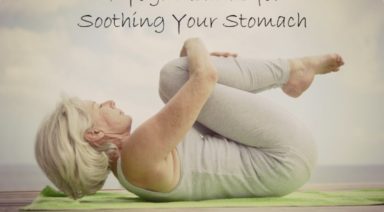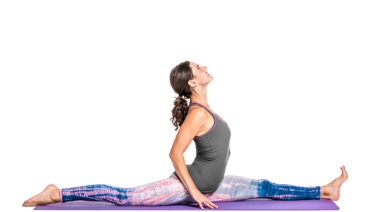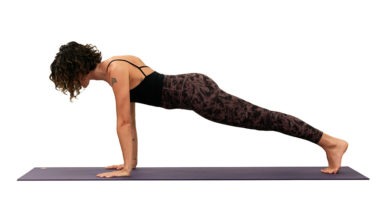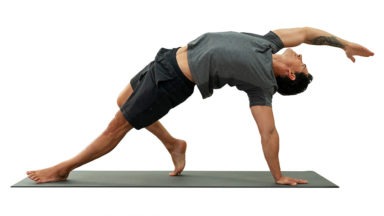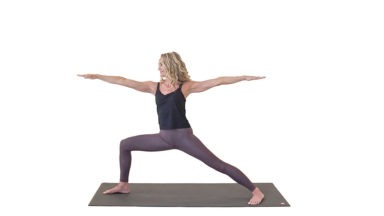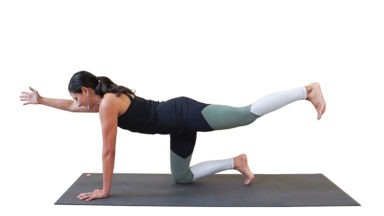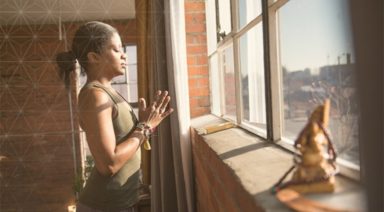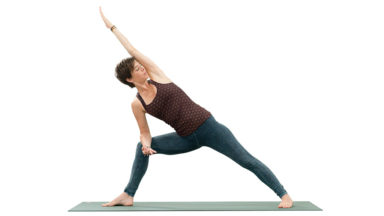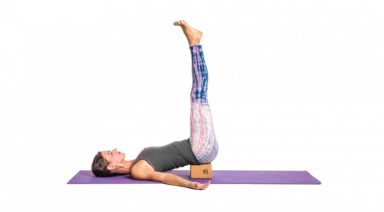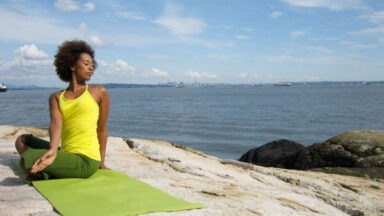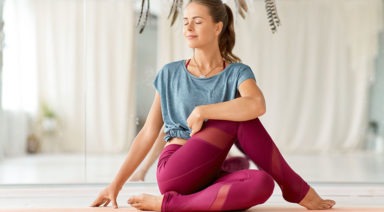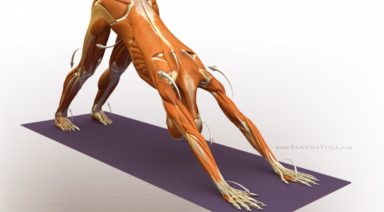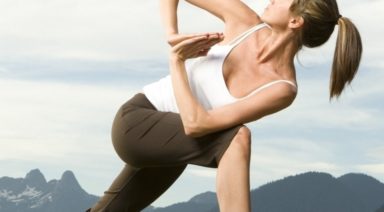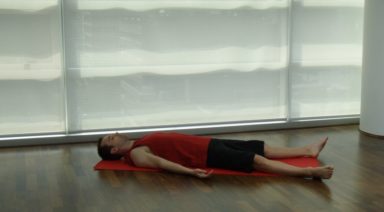Yoga for Injury and Trauma
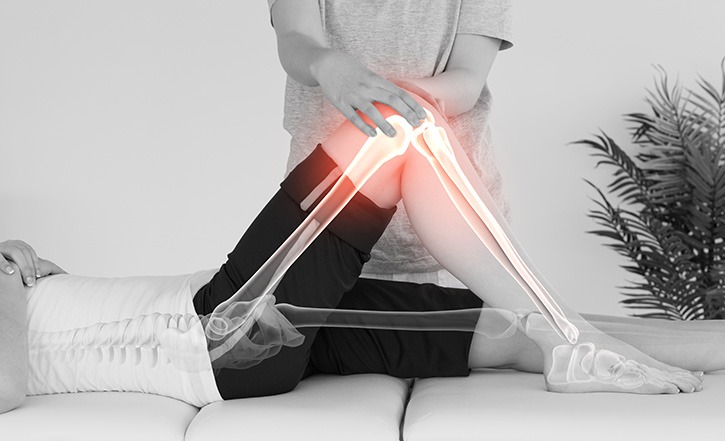

After a trauma, and the pause, you need to be discerning to determine when to get moving and grooving again. If you are healing from medical issues, it may be appropriate to ask your physician. When your body and spirit are ready for active healing, your intuition will sense that it’s time to get moving. Listen to your inner voice of wisdom!
THERAPEUTIC YOGA PRACTICES TO GET YOU MOVING AGAIN
SUN SALUTATIONS
Sun salutations bring the energetic quality of the sun into your body. Warmth, growth, energy, lightness, upliftedness.
MOON SALUTATIONS
Moon salutations bring the cooling, divine feminine, dark-side and circular energy. A complement to sun salutations, done as a flow that circles from the first to last pose in a mandala or a round fluid flow. Go as quickly or slowly as your body wants you to.
MEDITATE ON COMFORT
This practice is a powerful agent to shift perception. Use this meditation to change focus from pain to pleasure. Appropriate for people dealing with chronic or acute physical pain, or a sudden trauma.
YOGA NIDRA
Yoga Nidra is a deep relaxation that translates to “Yoga sleep,” meant to align the subconscious and conscious mind, allowing practitioners to behave more like their authentic self. By deeply relaxing and accessing the heart’s truest desire, yogis can then walk in alignment with their heart in thought, word, and deed.
WE ALL NEED SAVASANA
Regardless of where you are on a personal healing journey, you need rest. That is why you should practice savasana. Savasana may be used to relax, let go and surrender. There are many ways you can do savasana. Try out a few approaches to find what works best for you. You can simply lay flat on the floor on your back, palms up, legs relaxed. You may cover yourself in blankets, or place a heavy blanket folded over the hips and belly, for a more secure feeling. You may choose to prop your legs with bolsters, or legs up the wall, or on a chair.
YOGA POSES FOR BODIES RECOVERING FROM PHYSICAL INJURY
CHILD’S POSE ON A BOLSTER WITH A HEATED HERB PAD ON THE SACRUM

This pose will melt away stress; lengthen the spine safely for almost anybody, even if you have disc injuries. As with all forward folds, this pose is calming on a physiological level.
In this pose, your spread knees apart on a yoga blanket. The bolster, which is a supportive pillow, holds up the head and chest, keeping the back level, rendering it safe for most disc injuries. The warm herb pillow makes your spine happy as you breathe and relax.
PRONE SPINAL TWIST WITH BOLSTER
This posture is safe for almost anyone. It combats the discomfort of sitting too much. It loosens up the hips and oblique muscles and opens the chest. It allows practitioners to slow down, which is where much of the magic happens.
In this posture, use a bolster lengthwise on the mat. Lay the chest onto the bolster and allow the hips to be on the mat below. Ensure that both knees and the face are looking in the same direction. Add a folded yoga blanket between the legs to protect the knees and ankles. Aim to take about 10-30 breaths, slowly letting the chest turn more and more toward the bolster. Drift deeply into relaxation before repeating on the second side. Make sure to transition from one side to the other gently and to remain in the pose on the second side for just as long as the first side.
DOWNWARD DOG ON THE WALL
 Source: Suzanne Wright Yoga
Source: Suzanne Wright Yoga
This pose is safe for people with (most) shoulder injuries, pregnant bodies (although most pregnant bodies CAN do a typical downward dog) and for people who can not do weight bearing with the shoulders, to access the therapeutic benefits of spinal lengthening, blood circulation, and the alignment associated with downward dog.
This pose looks like the letter L turned upside down. Hinge your body at a 90° angle at the hips, arms extended. Place your palms and spreading fingers on the wall at shoulder width distance, your wrists and hips at hip height. You know your feet are far enough from the wall when they are flat on the floor facing the wall and, your hands flush with the wall, arms and spine extended. Be sure to bend your knees slightly and draw your tailbone backwards to lengthen the spine and protect the hamstrings.
Upset tummy? Try yoga for digestive relief
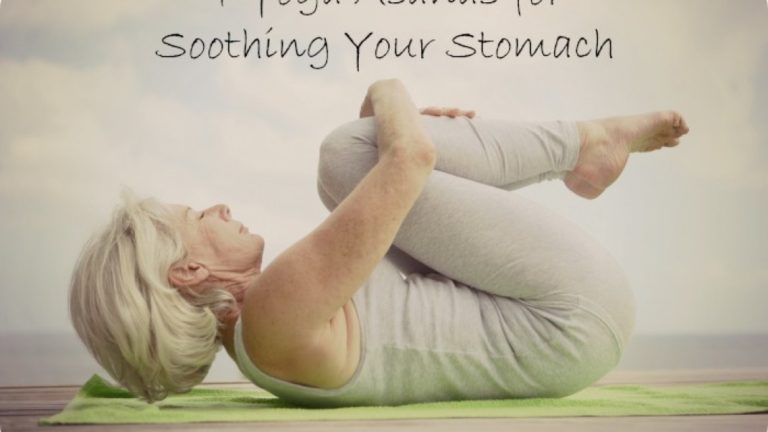
What else can yoga do for you? If you’ve overeaten or are facing digestive discomfort, fifteen minutes or so of yoga can make all the difference, according to Zayna Gold, creator of Healing Through Movement and a Boston-based yoga instructor. Here are just a few of the poses she recommends for settling your tummy, flattening out bloat, and easing stomach pains.
Don’t worry; these moves are very gentle and will work with the lightest of touches on calming your insides (both literal and metaphorical!). “You will feel less stress when your nervous system is relaxed. The health benefits will spread to the rest of your body and ease your digestion,” says Gold. Plus, the less you train your body to rely on over-the-counter meds like Pepto Bismol and Tums, the better! The natural, effective way is always preferable for long-term benefits.
- Apanasana
Benefits:
Practicing Apanasana, knees-to-chest pose, is a gentle way to restore proper flow and function to the organs of your torso. As you release excess pressure from your digestive organs and low back, your mind will begin to release its pressures and tensions, as well. It’s a simple way to encourage your body, mind, and spirit to remain pure and balanced throughout your day, as well as gives relief from excess digestive air, indigestion, bloating, flatulence, acidity, and constipation. Suffering from irritable bowel syndrome? This is the pose for you.
Plus, this pose helps to keep your low back limber. It is often used as a soothing counter-pose to backbends and spinal twists. Because your body is compact in the pose, your thoughts are more easily drawn inward, which is useful for calming the mind and rebalancing your energy.
However, make sure not to practice this pose if you are recovering from abdominal surgery or a hernia. Also avoid this pose if you have a spinal, knee, or hip injury. If you have a neck injury, do not lift your head.
Try It Out:
-
Begin by lying on your back, with your legs and arms extended.
-
As you exhale, draw both of your knees to your chest. Clasp your hands around them. If it is possible for you, wrap your forearms over your shins and clasp each elbow with the opposite hand.
-
Keep your back flat on the mat. Release your shoulder blades down toward your waist. Broaden across your collar bones.
-
Draw your tailbone and sacrum down toward the mat, lengthening your spine even more.
-
If it is comfortable for you to do so, softly rock backward and forward or side-to-side for a gentle spinal massage.
-
Tuck your chin slightly and gaze down the center line of your body.
-
Hold for up to one minute. Keep your breath smooth and even.
-
With an exhalation, release and extend both legs along the floor and rest. Repeat up to six times.
-
Bridge Pose
Benefits:
Bridge Pose is a chest, heart, and shoulders opener and works to stretch the spine, the back of the neck, the thighs, and the hip flexors (front hip joints). Because your heart is higher than your head in this pose, it is considered a mild inversion (less strenuous than other inversions, such as Headstand) and holds all the benefits of inversions, like relief from stress, fatigue, anxiety, headaches, insomnia, and mild depression. Get ready to have your mind be calmed and your blood pressure treated, and if you have asthma, it’s great for increasing lung capacity by opening the chest.
Why is Bridge Pose so great for digestion? It also stimulates the abdominal organs and thyroid glands, which improves digestion and helps to regulate metabolism. Because it revitalizes the legs and stretches the shoulders, it can be a particularly rejuvenating pose for those who spend the day sitting in front of a computer or driving.
Practicing Bridge Pose can be a potent lesson in learning to slow down and listen to your body. Your spine, shoulders, and thighs will tell you how far to take the pose. The less you push, the more the pose will open up. Turn your awareness inward and notice how your body releases its grip when you don’t force it. Let your Bridge be a connection between your body, mind, and spirit.
Try It Out:
-
Lie supine on the floor, and if necessary, place a thickly folded blanket under your shoulders to protect your neck. Bend your knees and set your feet on the floor, heels as close to the sitting bones as possible.
-
Exhale and, pressing your inner feet and arms actively into the floor, push your tailbone upward toward the pubis, firming (but not hardening) the buttocks, and lift the buttocks off the floor. Keep your thighs and inner feet parallel. Clasp the hands below your pelvis and extend through the arms to help you stay on the tops of your shoulders.
-
Lift your buttocks until the thighs are about parallel to the floor. Keep your knees directly over the heels, but push them forward, away from the hips, and lengthen the tailbone toward the backs of the knees. Lift the pubis toward the navel.
-
Lift your chin slightly away from the sternum and, firming the shoulder blades against your back, press the top of the sternum toward the chin. Firm the outer arms, broaden the shoulder blades, and try to lift the space between them at the base of the neck (where it’s resting on the blanket) up into the torso.
-
Stay in the pose anywhere from 30 seconds to 1 minute. Release with an exhalation, rolling the spine slowly down onto the floor.
-
Seated Forward Bend
Benefits:
Seated forward bend, or paschimottanasana, stretches the spine, shoulders, pelvis, and hamstrings. It also stimulates and balances the liver, kidneys, adrenal glands, ovaries, and uterus. And while traditional yoga texts say Paschimottanasana can cure disease, modern-day yoga teachers agree to its many other benefits, which include relief from stress, improved digestion and appetite, relief from menstrual pain and symptoms of menopause, a calmer mind, reduced anxiety and fatigue, improved sleep and relief from insomnia. This pose is also believed to be therapeutic for high blood pressure, infertility, and sinusitis. It is reputed to be beneficial for overcoming obesity, as well.
Though Paschimottanasana can feel “intense,” it can be easy to push your body too much, seeking more intense sensations as signs of progress. Be careful not to misinterpret painful, sharp, or piercing sensations as positive signs! Back off if you are injuring yourself.
The more you relax in the pose, the more naturally your body will open up. Forcing forward folds will actually cause your muscles to shorten and resist even more. Breathe deeply and evenly. Settle into the moment. Turn your thoughts inward and allow resistance to gently fade away.
Try It Out:
-
Sit on the floor with your buttocks supported on a folded blanket and your legs straight in front of you. Press actively through your heels. Rock slightly onto your left buttock, and pull your right sitting bone away from the heel with your right hand. Repeat on the other side. Turn the top thighs in slightly and press them down into the floor. Press through your palms or finger tips on the floor beside your hips and lift the top of the sternum toward the ceiling as the top thighs descend.
-
Draw the inner groins deep into the pelvis. Inhale, and keeping the front torso long, lean forward from the hip joints, not the waist. Lengthen the tailbone away from the back of your pelvis. If possible take the sides of the feet with your hands, thumbs on the soles, elbows fully extended; if this isn’t possible, loop a strap around the foot soles, and hold the strap firmly. Be sure your elbows are straight, not bent.
-
When you are ready to go further, don’t forcefully pull yourself into the forward bend, whether your hands are on the feet or holding the strap. Always lengthen the front torso into the pose, keeping your head raised. If you are holding the feet, bend the elbows out to the sides and lift them away from the floor; if holding the strap, lighten your grip and walk the hands forward, keeping the arms long. The lower belly should touch the thighs first, then the upper belly, then the ribs, and the head last.
-
With each inhalation, lift and lengthen the front torso just slightly; with each exhalation release a little more fully into the forward bend. In this way the torso oscillates and lengthens almost imperceptibly with the breath. Eventually you may be able to stretch the arms out beyond the feet on the floor.
-
Stay in the pose anywhere from 1 to 3 minutes. To come up, first lift the torso away from the thighs and straighten the elbows again if they are bent. Then inhale and lift the torso up by pulling the tailbone down and into the pelvis.
-
Balasana/Child’s Pose
Benefits:
The perfect way to wrap up your yoga therapy, Child’s Pose helps to stretch the hips, thighs, and ankles while reducing stress and fatigue. It gently relaxes the muscles on the front of the body while softly and passively stretching the muscles of the back torso.
This resting pose centers, calms, and soothes the brain, making it a therapeutic posture for relieving stress. When performed with the head and torso supported, it can also help relieve back and neck pain. Sometimes used as a counter-pose to backbends, Child’s Pose restores balance and equanimity to the body.
Life is the period between one breath and the next; the person who only half breathes, only half lives. He who breathes correctly acquires control of the whole being.
Regular practice of Child’s Pose also teaches conscious exploration of the breath. As the front of the body releases onto the thighs, the frontal ribs and abdominal muscles become slightly compressed. This restriction allows for a deeper opening of the back of the torso as the lungs expand behind the body. As this happens, keeping the breath slow, long, and steady allows for a new awareness of the breath’s path through the front and back of the body.
Try It Out:
-
Kneel on the floor. Touch your big toes together and sit on your heels, then separate your knees about as wide as your hips.
-
Exhale and lay your torso down between your thighs. Broaden your sacrum across the back of your pelvis and narrow your hip points toward the navel, so that they nestle down onto the inner thighs. Lengthen your tailbone away from the back of the pelvis while you lift the base of your skull away from the back of your neck.
-
Lay your hands on the floor alongside your torso, palms up, and release the fronts of your shoulders toward the floor. Feel how the weight of the front shoulders pulls the shoulder blades wide across your back.
-
Balasana is a resting pose. Stay anywhere from 30 seconds to a few minutes. Beginners can also use Balasana to get a taste of a deep forward bend, where the torso rests on the thighs. Stay in the pose from 1 to 3 minutes. To come up, first lengthen the front torso, and then with an inhalation lift from the tailbone as it presses down and into the pelvis.









